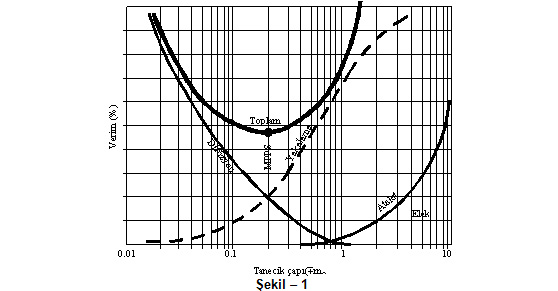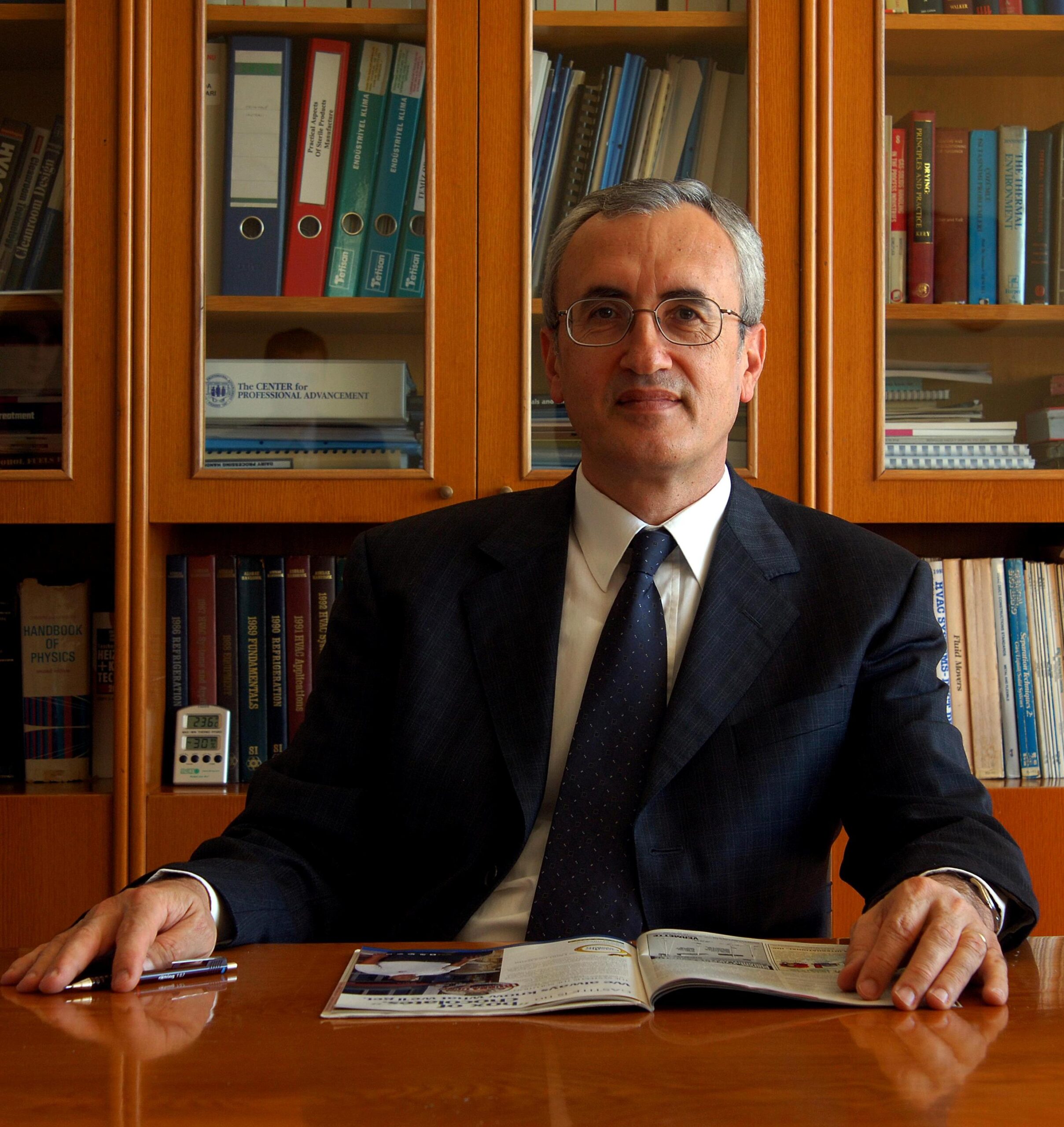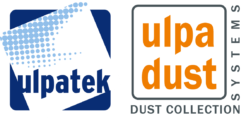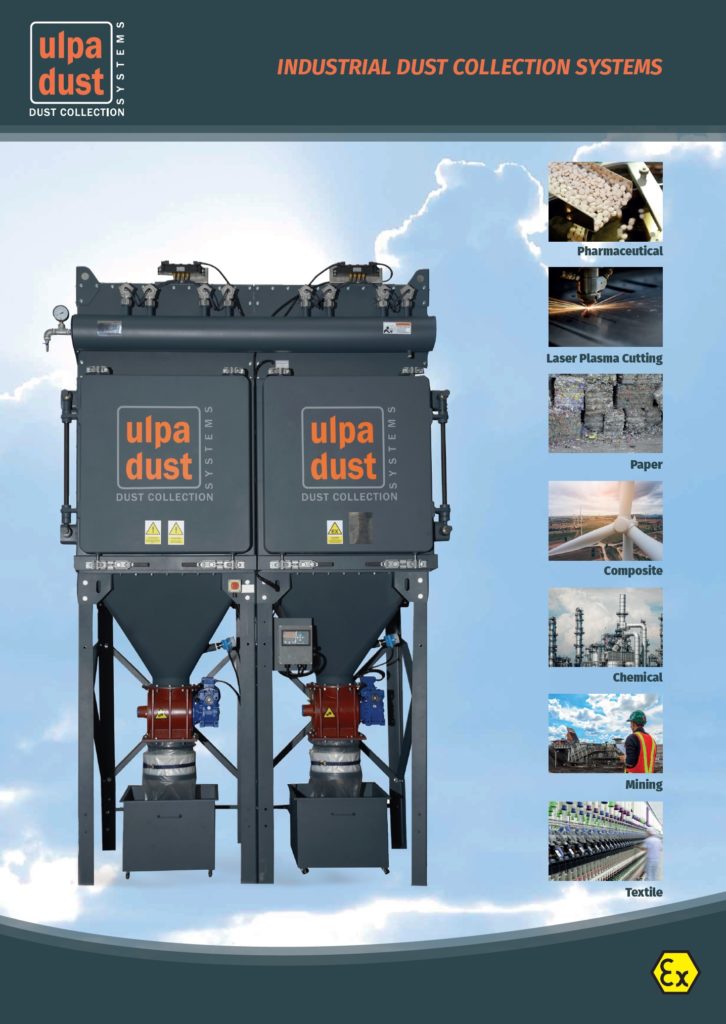HEPA FILTERS
HEPA FILTERS AND TEST STANDARDS RELATING TO CLEAN AIR
Prof.Dr.F.Taner ÖZKAYNAK
ABSTRACT
Usage of HEPA filters in cleanrooms is increasing rapidly, especially in the applications concerning food processing, pharmaceutical plants and hospitals. Basically there are two independent standards concerning the HEPA filters; CEN standards used in Europe and IEST Recommended Practices used in the United States. The filter efficiency is defined at 0.3 µm particle size for HEPA filters in IEST standards. In contrast, EN-1822 defines the filter efficiency at MPPS’s (Most Penetrating Particle Size). The filter test methods also differs in these two standards. IEST recommends particle counters and photometers for filter tests, while EN 1822 requires particle counters.
1. INTRODUCTION
(F5, F6, F7, F8, F9), High efficiency-HEPA (H10) according to the EN779 and EN1822 standards published by the European Commission for Standardization (CEN) , H11, H12, H13, H14) and Ultra high efficiency-ULPA (U15, U16, U17). As is known, G and F type filters are used in normal comfort applications and to protect high efficiency filters. In this study, high efficiency filters used in clean rooms, ie HEPA filters, will be reviewed.
As in the whole world, clean room or clean environment practices are constantly increasing in our home. Manufacture of production in an environment that meets the existing standards in order to market the globalized products in the pharmaceutical sector makes clean room applications more common. Prior to the GMP guidelines, HEPA (High Efficiency Particulate Air) filters, which are used only in Class A, B and C environments, have started to be used as standard in Class D rooms by some pharmaceutical companies in recent years.
Beginning with the production of food containers in the food sector, creating clean rooms or clean environments during filling and packing, healthy foods are being produced and the shelf life of the products is being increased. HEPA filters are also widely used for this purpose.
The importance of air quality in operating rooms, intensive care and burn treatment rooms in hospitals is now accepted by everyone and these rooms are designed like a clean room and utilize HEPA filters in air conditioning systems. While such applications are slowly becoming standard in our country, in Europe, the standards for DIN 1946/4 increase the cleanroom areas in hospitals and expand the use of HEPA filters.
For HEPA and ULPA (Ultra Low Penetration Air) filters, there are two accepted and widely used test standards all over the world. These are the standards recommended by the IEST (Institute of Environmental Sciences and Technology) published in the United States and the EN standards published by CEN in Europe.
2. IEST STANDARDS
Among the applications IEST recommends are the standards for HEPA filters.
– IEST-RP-CC001.3 HEPA and ULPA Filters
Here, terms, definitions, classification of HEPA and ULPA filters, identification of materials used in manufacturing, test instruments and marking methods are described.
– IEST-RP-CC034.1 HEPA and ULPA Filter Leak Tests
Here, leak test methods for HEPA and ULPA filters, test conditions, aerosol production, aerosol detection (photometers or particle counters) and test methods are described.
– Test of IEST-RP-CC021.1 HEPA and ULPA Filter Fibers
Here we describe the methods of making tests such as pressure drop, yield, thickness, strength, elongation, hardness, weight loss at high temperatures and reporting techniques of paper or synthetic materials used in HEPA and ULPA filter manufacturing.
– Testing of IEST-RP-CC007.1 ULPA Filters
Here, the methods of performing the yield test using ULPA filters with particle counters are described.
As a result, the HEPA and ULPA filters defined by IEST and the recommended test methods are shown in Table-1.

As can be seen from the table above, when the HEPA filters are identified with yields of a certain particle diameter (0.3 μm), this diameter is given as a smaller and an interval (0.1-0.2 μm) in ULPA filters. In addition, HEPA filters can be tested with the help of a photometer, and more precise filters (ULPA) can be tested with particle counters.
3. EN 1822 STANDARD
The EN-1882 standard published by CEN consists of 5 parts. These are:
– EN 1822-1 Classification, Performance Testing and Marking
– EN 1822-2 Aerosol Production, Measuring Instruments, Grain Count
– Testing of EN 1822-3 Filter Fibers
– EN 1822-4 Sealing the Filter Element
– Determination of yield of EN 1822-5 filter element
4. DIFFERENCES BETWEEN STANDARDS
Here, MMPS (Most Penetrating Particle Size), which is defined for yield instead of a fixed particle diameter, refers to the most difficult particle size. As it is known, 4 different filtration mechanisms in HEPA and ULPA filters, namely screen, capture, inertia and diffusing mechanisms, catch particles according to different physical rules. The increase in particle diameter decreases the diffusion effect while increasing inertia and trapping effect. For this reason, as can be seen in Figure 1, there is a particle diameter (MPPS) in a filter fiber that is the most difficult to hold for a selected speed, that is, yield minimum.
Figure 1
The lysis effect and MPPS by particle diameter of various filtration mechanisms.

The penetration term defined in Table 2 represents the ratio of filtrate to filtrate before filtration (1-yield).
According to EN 1822 there are 3 independent tests for HEPA and ULPA filters.
1) Filter Fiber Yield Test
It is a yield test made at MPPS, usually at the speed of fiber use by companies that produce filter materials.
2) Filter Leak Test
It is a test made in MPPS using grain counters. However, the H13 and H14 filters can also be tested for oil smoke leakage as an alternative to this test.
3) Filter efficiency test in MPPS
The total efficiency of the filtration is determined by a fixed probe and a particle counter connected thereto or by scanning the entire filter surface.
The results of these tests are summarized in Table-2.
Another difference between IEST and the CEN standard is the method used in sealing tests. As it can be seen from Table 1, EN1822 does not only suggest particle counters or photometers with differential mobility particle counters (DMPS), whereas IEST suggests the use of photometers and particle counters according to the filter type.
It also allows the filter efficiency to be obtained using the same values, while the EN1822 surface is leak tested for leak testing. There is no method in IEST that determines the efficiency with sealing.
It is very difficult to find exactly the correspondences of filters A, B, C, D, E, F defined in IEST in EN-1822. Since MPPS and yield vary with speed, speed is an important factor. For example, a filter with a speed of H14 according to EN1822 at a certain speed value is anti-CEST in IEST, while the filter with speed increases H13 according to EN 1822, it still can provide C Class filter characteristics according to IEST.
In addition to the aforementioned standards, supervisory organizations may also have special needs. For example, in the U.S., the FDA (Federal Drug Administration), the most well-known institution on the subject, allows only the use of photometers in the leak testing of HEPA filters. It also does not allow the use of solid particles in tests to be carried out in sterile fields.
Apart from efficiency and sealing, properties required from HEPA filters include low pressure loss, uniform distribution of velocity along the surface, gas extraction from the materials used during construction, easy attachment and detachment, long life and resistance to nipples.
5. REFERENCES
[1] ÖZKAYNAK F.T., “Clean Room Design and Air Conditioning Systems”, Tetisan Technical Publications, 2001.
[2] IEST, “IEST-RP-CC001.3 HEPA and ULPA Filters”, 2003.
[3] IEST, “IEST-RP-CC034.1 HEPA and ULPA Filter Leak Tests”, 2003.
[4] IEST, “IEST-RP-CC021.1 Testing HEPA and ULPA Filter Media”, 2002.
[5] IEST, “IEST-RP-CC007.1 Testing ULPA Filters”, 2002.
[6] CEN, “EN 1822-1 Classification, Performance Testing Marking”, 1998.
[7] CEN, “EN 1822-2 Aerosol Production, Measuring Equipment, Particle Counting Statistics”, 1998.
[8] CEN, “EN 1822-3 Testing Flat Sheet Filter Media”, 1998.
[9] CEN, “Determining Leakage of Filter Elements (Scan Method), EN 1822-4, 2001.
[10] CEN, “Determining the Efficiency of Filter Elements”, 2000.
Writer

After studying at Liseyi Robert Academy, Y.Makina Mühendisi in ITU in 1971; Doctor at Lehigh University, Associate Professor at 1981, ITU at 1995. I have become a professor at the faculty of machinery. In addition to teaching, he has been involved in various projects in the US such as General Electric (GE), American Atomic Energy (AEC) and Energy Research Center (ERC). He has directed projects and commitments in various subjects such as industrial and clean room air conditioning systems, drying, heat recovery, flue gas cleaning, pneumatic transport, refinement. Later, İ.T.Ü. While continuing to be a part-time faculty member at the Faculty of Mechanical Engineering, he worked as a manager at Tethysan Ltd. Prof.Dr.F.Taner ÖZKAYNAK has more than 35 articles and books published on various topics. He was also the founder of Ulpatek Filter and died on 20 October 2011.
F. Taner ÖZKAYNAK,




